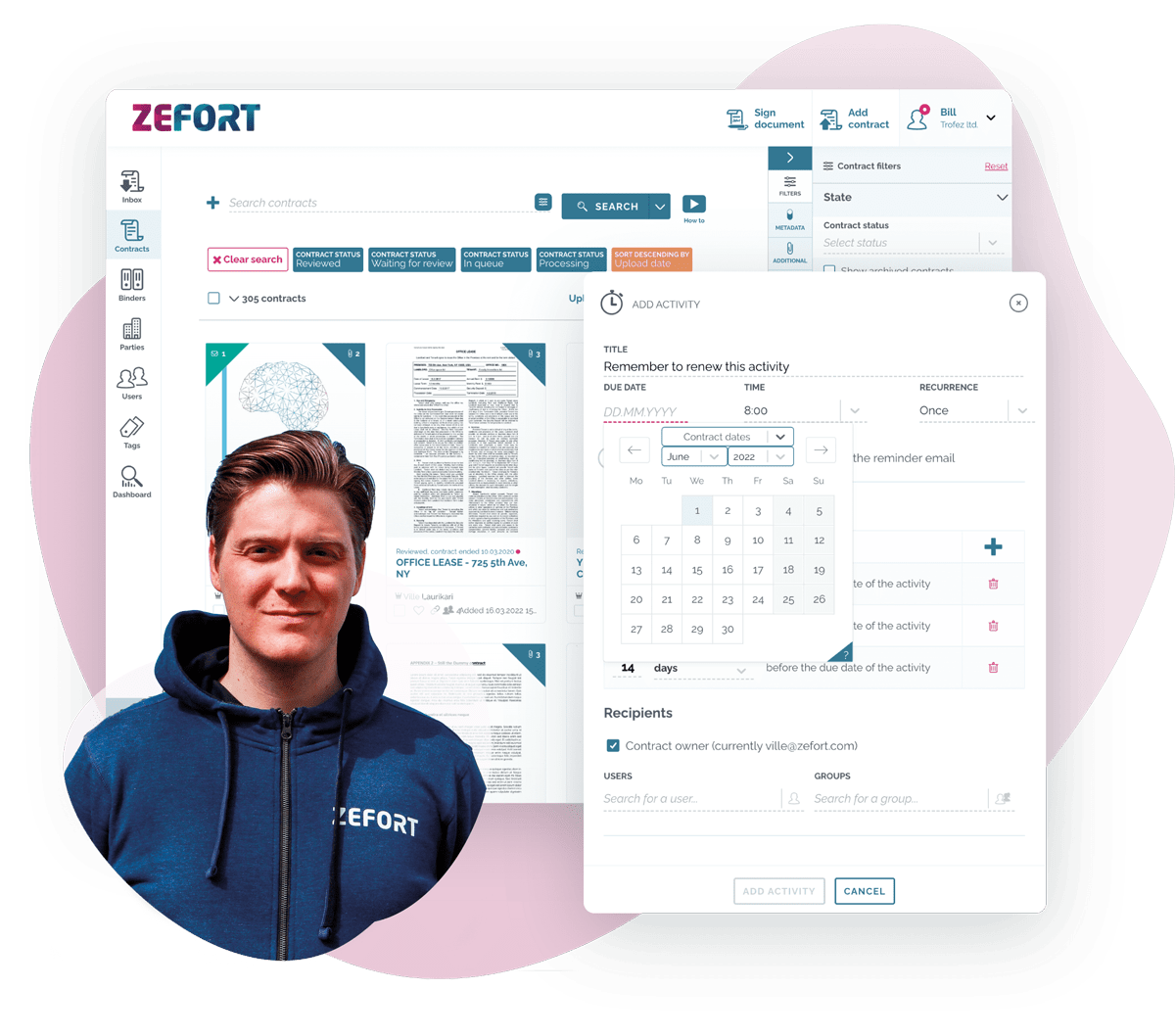Transforming Legal Complexities into User-Friendly Designs: The Power of Information Design in the Legal Field
Laws, contracts, and legal jargon can often feel like an impenetrable fortress for individuals seeking justice or legal guidance. The complexity of the legal field has long been a source of frustration for those without a legal background.
But what if there was a way to break down these barriers and transform legal complexities into user-friendly designs? Enter the power of information design – a game-changer in the legal field that has the potential to revolutionize how we navigate the intricacies of law.
In this article, we’ll explore how information design holds the key to making the legal system more accessible, understandable, and ultimately, more equitable for everyone.
The complexities of legal information
Legal information is notorious for its complexities. The language used in legal documents is often dense and filled with jargon, making it difficult for the average person to understand. Moreover, legal information is frequently scattered across various sources, such as statutes, regulations, and case law, making it challenging to locate and comprehend. In addition, legal concepts can be intricate and nuanced, requiring a deep understanding of the law to interpret properly.
These complexities pose significant barriers for individuals trying to navigate the legal system, highlighting the need for clear and accessible legal information design.
The need for user-friendly designs
User-friendly designs are crucial in legal information because they enhance accessibility and comprehension. Complex legal concepts can be overwhelming, and poorly designed materials only exacerbate the problem. By employing user-friendly designs, legal information becomes easier to navigate, understand, and act upon. For example, clear headings and subheadings, concise language, and intuitive layouts help users quickly locate the information they need.
Understanding Information Design
Defining Information Design
Information design is the practice of organizing and presenting information in a way that is clear, accessible, and easy to understand. In the context of legal information, it involves designing legal documents, contracts, and other legal materials to simplify complex concepts and terminology.
The goal of legal information design is to enhance comprehension and reduce the potential for misunderstanding or confusion among its intended audience. Through the use of visual aids, typography, structure, and layout, information designers strive to make legal information more engaging and user-friendly.
By employing a human-centered approach, information design improves the accessibility of legal materials, promoting transparency and empowering individuals to effectively navigate the intricacies of the law.
Key principles of Information Design
Key principles of Information Design in the context of Legal information design include clarity, simplicity, and organization. Clarity is essential to effectively communicate legal concepts and processes, avoiding ambiguous language or jargon. Simplicity involves presenting information in a straightforward manner, avoiding complexity that may confuse users. Organizing information through logical structures and hierarchies helps users navigate through legal content efficiently.
Visual cues such as headings, bullet points, and highlighting can further enhance comprehension. Consistency in design elements and using user-friendly font sizes and colors also contribute to a positive user experience. These principles aim to make legal information more accessible and understandable to users.
Simplification and organization
To make complex legal concepts more accessible, it is essential to present information concisely and clearly. This involves removing unnecessary jargon and using plain language that is easily understood by the general public. Breaking down information into smaller, manageable sections and using headings and subheadings helps readers navigate through the content more effectively.
By employing visual aids such as bullet points, tables, and diagrams, complex information can be presented in a simplified and organized manner, improving comprehension and user experience.
Visual representation and hierarchy
Visual representation plays a crucial role in legal information design, allowing users to quickly understand complex concepts. By utilizing different visual elements such as icons, colors, and fonts, designers can effectively communicate the hierarchy of information. This helps users easily identify important sections, headings, and subheadings, ensuring that they can navigate the information with ease.
Visual hierarchy guides users’ attention and helps them focus on the most critical or relevant information, enhancing the overall user experience.
Additionally, proper visual representation can improve comprehension and reduce the likelihood of errors or misunderstandings, ultimately leading to more effective communication of legal information.
Clear and concise language
Clear and concise language ensures that information is easily understandable and accessible to the users. Using plain language without unnecessary jargon or complex terms helps the audience comprehend legal concepts more efficiently. Clear language also enhances transparency and promotes trust. It allows individuals to make informed decisions and take appropriate actions based on the provided information.
By eliminating ambiguity and confusion, clear and concise language enables legal information to be more effective, empowering individuals to exercise their rights and comply with legal obligations.
The Power of Information Design in the Legal Field
Enhancing accessibility to legal documents
- Simplify language: Legal documents often contain complex jargon that can be overwhelming for individuals without legal training. By simplifying the language and using plain English, legal information becomes more accessible and understandable to a wider audience.
- Clear structure and formatting: Breaking down legal documents into sections with clear headings helps users navigate through the information more easily. Additionally, using bullet points, lists, and tables can enhance readability and comprehension.
- Visual aids: Incorporating visuals such as icons, diagrams, and infographics can assist in conveying complex legal concepts or processes. Visual aids help to make legal information more engaging and accessible, particularly for individuals with different learning styles or visual impairments.
- Online platforms and interactive tools: Making legal documents available on user-friendly online platforms can significantly enhance accessibility. Hyperlinks, search functions, and interactive tools can make it easier for individuals to find specific information within lengthy documents, improving their overall experience.
- Translations: Providing legal information in multiple languages is crucial for reaching diverse communities. Offering professional translations of key legal documents ensures that individuals with limited proficiency in the primary language can understand their rights and obligations.
- User testing and feedback: Regular user testing and obtaining feedback from individuals who are not familiar with legal terms can help identify areas for improvement. By incorporating user perspectives, legal information design can align more closely with users’ needs and enhance accessibility.
Improving comprehension of complex legal concepts
Improving comprehension of complex legal concepts is crucial in ensuring accessibility to legal information. Here are some effective strategies:
- Plain language: Simplify legal jargon and eliminate unnecessary complexity, using clear and straightforward language.
- Visual aids: Incorporate visuals such as charts, diagrams, and illustrations to enhance understanding of complex concepts.
- Structured layout: Organize legal information into logical sections and subheadings, making it easier for readers to navigate and comprehend.
- Examples and scenarios: Provide real-life examples and scenarios to illustrate how legal concepts apply in practical situations.
- Use of analogies: Draw comparisons to everyday situations or objects to help readers relate to and grasp abstract legal concepts.
- Summaries and key points: Include concise summaries and key points within the text, helping readers to quickly identify and retain important information.
- User testing: Conduct usability testing with target audience members to assess the effectiveness of the design in improving comprehension.
- Iterative improvements: Continuously refine and improve legal information based on user feedback and insights gained from user testing.
Streamlining legal processes and procedures
Streamlining legal processes and procedures is essential for efficient legal information design. Simplifying complex legal documents, such as contracts or court forms, can improve accessibility for individuals with varying levels of legal knowledge. By using plain language and clear formatting, legal professionals can make legal materials more user-friendly and reduce the risk of misinterpretation.
Incorporating technology, such as online platforms or document automation tools, can also enhance efficiency by automating repetitive tasks and reducing manual errors.
Implementing Legal Information Design Strategies
Collaboration between lawyers and information designers
Collaboration between lawyers and information designers is critical in the field of legal information design. Lawyers possess a deep understanding of legal concepts and expertise in interpreting complex laws and regulations. On the other hand, information designers are skilled in simplifying and visualizing complex information, making it more accessible and understandable to a wider audience.
By working together, lawyers and information designers can create legal materials that are not only accurate and legally sound but also clear, intuitive, and user-friendly. This collaboration enhances the effectiveness of legal communication, ensuring that individuals can access and comprehend legal information more easily.
User testing and feedback iteration
By involving actual users in the testing phase, designers can gather valuable insights on how people understand and use legal information. This data then informs iterative improvements to the design, ensuring that it is user-friendly and effective. Through user testing, designers can identify any usability issues, confusion, or areas where the information may be dense or inaccessible.
By continuously refining the design based on user feedback, designers can create legal information resources that better meet the needs of their intended audience.
Challenges and Future Possibilities
Overcoming resistance to change in the legal profession
Overcoming resistance to change in the legal profession can be challenging but necessary for progress. One common resistance is the fear of losing traditional methods and expertise, which can be addressed by emphasizing the complementary nature of new approaches. Another challenge is the lack of awareness and understanding of the benefits of change, requiring clear communication and education about the positive impact of legal information design.
Adapting to advancements in technology
Adapting to advancements in technology is crucial in the field of legal information design. With the rapid pace of technological development, legal professionals need to stay updated and embrace innovative tools to streamline their work processes. Technology can enhance the accessibility and usability of legal information, making it easier for clients to understand complex legal concepts.
By utilizing interactive platforms, intuitive interfaces, and visual aids, legal information can be presented in a user-friendly manner, improving the overall experience.
Additionally, leveraging artificial intelligence and automation can help expedite repetitive tasks, freeing up time for legal professionals to focus on higher-value work. Embracing technology is not just about keeping up with the times, but about enhancing legal practice and providing better services to clients.
Expanding the application of legal information design
Expanding the application of legal information design is crucial for improving access to justice. By simplifying complex legal documents and using plain language, individuals can better understand their rights and legal procedures. This design approach can be extended to various areas of law, such as contracts, court forms, and regulatory materials.
Additionally, visual aids, icons, and infographics can be utilized to enhance comprehension. Furthermore, integrating technology into legal information design can make legal resources more accessible and user-friendly. Expanding the application of legal information design is an ongoing effort that requires collaboration between legal professionals, designers, and technology experts. Together, they can strive to create a more inclusive and comprehensible legal system.
Embracing the potential of legal information design
Embracing the potential of legal information design holds immense promise for improving access to justice. By simplifying complex legal concepts and processes, it enables individuals to navigate the legal system more effectively. Through carefully crafted visuals and interactive tools, legal information design can empower individuals to understand their rights and obligations, make informed decisions, and avoid costly mistakes.
Moreover, it has the potential to bridge the language and literacy barriers that often hinder access to legal information. By embracing this innovative approach, we can revolutionize how we communicate legal information, rendering it more accessible, user-friendly, and inclusive for all.
Over to you
Information design has the potential to simplify complex legal processes and make them more accessible to users. By breaking down legal complexities into user-friendly designs, individuals can better understand and navigate the legal field. This article explored the power of information design in transforming complex legal concepts into digestible and easy-to-use formats.





